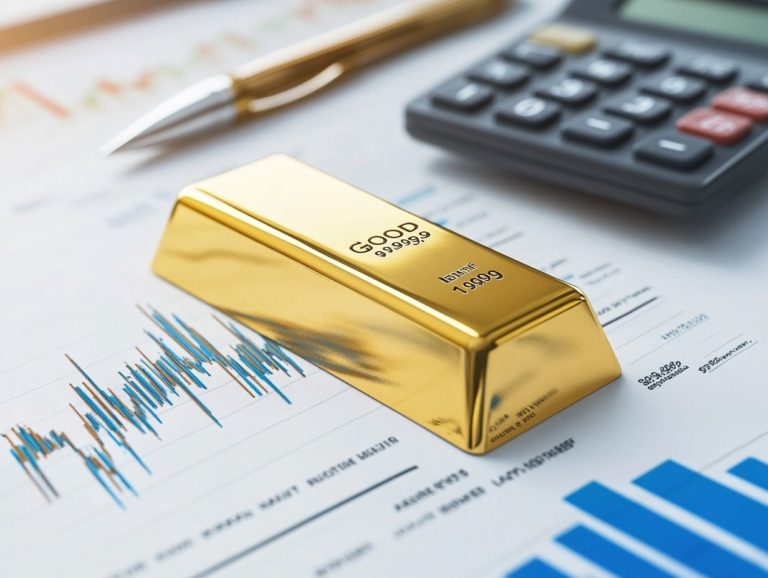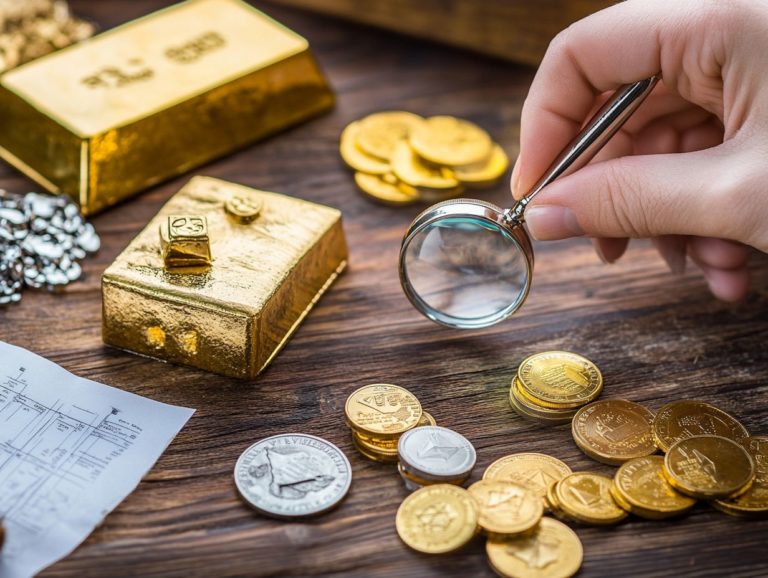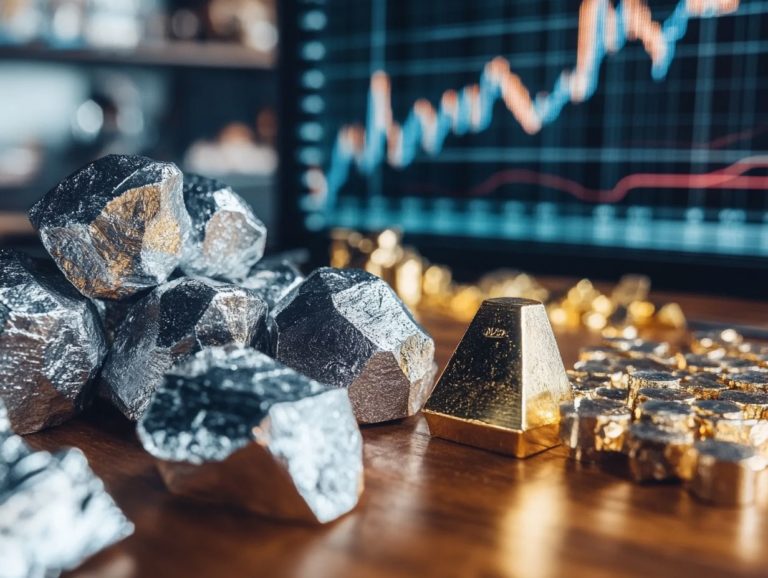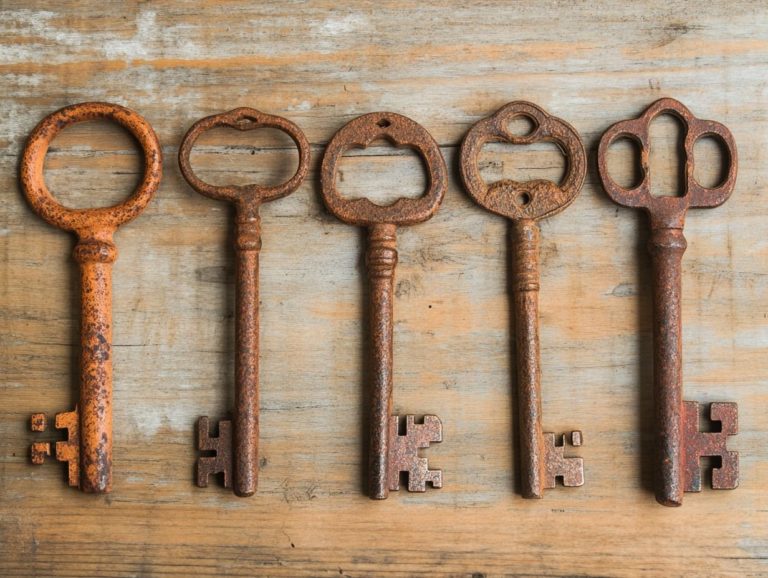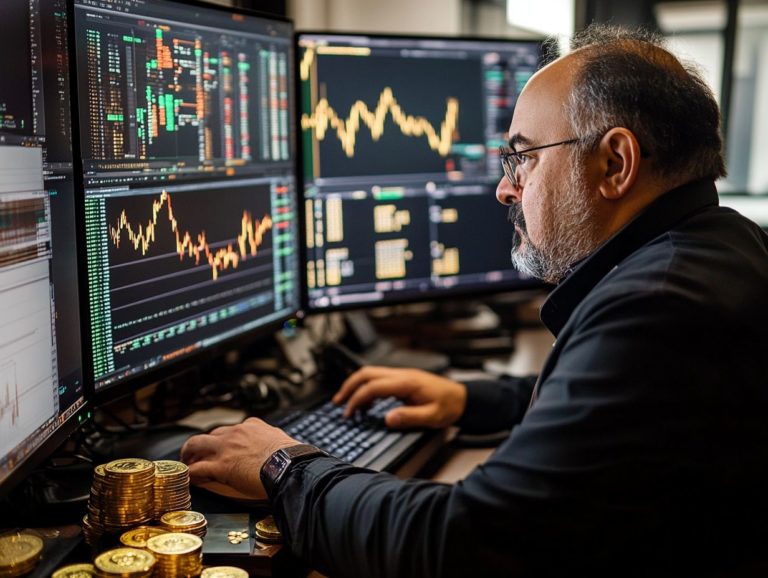The Benefits of Investing in Physical Metals
Investing in physical metals has become increasingly popular among those seeking to diversify their portfolios and hedge against economic uncertainties.
From gold and silver to platinum and more, these tangible assets present distinct advantages, such as protection against inflation and potential tax benefits.
Understanding the world of physical metals requires knowledge of the different types available and the strategies for wise investment.
This article delves into the benefits, types, and potential risks tied to investing in physical metals, providing you with the insights needed to make informed decisions.
Contents
- Key Takeaways:
- Advantages of Investing in Physical Metals
- Types of Physical Metals to Invest In
- How to Invest in Physical Metals
- Potential Risks and How to Mitigate Them
- Frequently Asked Questions
- What are the benefits of investing in physical metals?
- What is portfolio diversification and how does investing in physical metals help achieve it?
- How does investing in physical metals protect against inflation?
- What makes investing in physical metals a good hedge against economic uncertainty?
- Are there any tax benefits to investing in physical metals?
- What are the risks associated with investing in physical metals?
Key Takeaways:
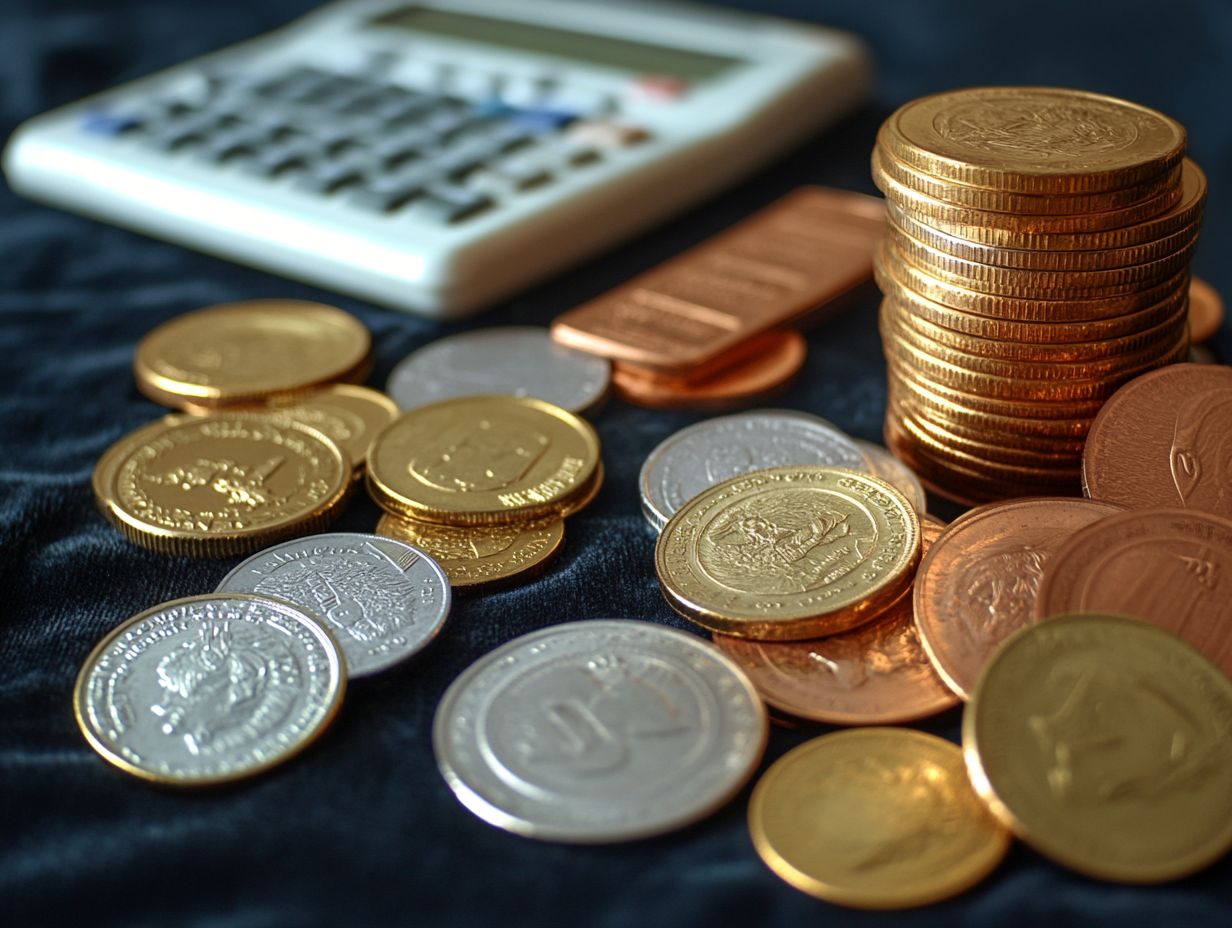
- Investing in physical metals provides diversification and protection against inflation, making it a smart addition to any investment portfolio.
- Physical metals also offer tax benefits, such as potential tax deductions and exemption from capital gains tax in certain cases.
- Gold, silver, platinum, and other metals are popular choices for investment due to their historical value and stability.
What are Physical Metals?
Physical metals, often called precious metals, include a range of tangible assets like gold, silver, platinum, palladium, and rhodium. Each of these metals has significant value in both investment and industrial contexts.
You may recognize these metals for their historical importance, as they serve as a hedge against inflation and a reliable safe haven during times of economic uncertainty.
By diversifying your portfolio with these high-value assets, you can tap into their liquidity (the ease of converting an asset into cash) and potential for capital appreciation (increase in value) as market trends shift.
These metals each possess unique characteristics that make them particularly attractive to investors. They resist corrosion, are malleable, and hold intrinsic value that surpasses fluctuations in currency, especially when it comes to understanding the value of physical silver.
Their role in investment portfolios remains strong, especially during turbulent economic periods when traditional assets may struggle. For centuries, precious metals have been viewed as a store of wealth, with demand often surging amid geopolitical uncertainties or financial crises.
Right now, savvy investors are flocking to these tangible assets to safeguard their wealth and secure long-term returns.
Advantages of Investing in Physical Metals
Investing in physical metals can be a game-changer for your financial future! It brings a wealth of advantages, including enhanced financial security, diversification of your investment portfolio, and a reliable safeguard against inflation and economic turmoil.
As tangible assets, metals such as gold and silver not only help cushion the impact of market volatility but also offer liquidity and promising investment opportunities. Understanding the benefits of investing in silver for stability makes them essential for anyone looking to engage in thoughtful financial planning.
Diversification and Inflation Protection
Diversification is a cornerstone of a sound investment strategy, helping you mitigate risks while enhancing your financial portfolio. Investing in physical metals serves as a formidable inflation hedge, especially during periods of market volatility.
Precious metals, such as gold and silver, offer a low correlation to traditional assets, making them ideal choices for diversifying your portfolio and protecting against inflation. Among the options, understanding the benefits of investing in physical silver can be particularly advantageous.
This unique characteristic allows you to experience stability when other financial instruments might be undergoing dramatic fluctuations. By incorporating metals into your investment strategy, you can cultivate a more resilient approach that not only safeguards your wealth but also opens avenues for growth.
The intrinsic value of physical metals tends to endure regardless of economic conditions, providing a reliable safeguard during turbulent times.
As inflation steadily erodes purchasing power, these assets become particularly enticing, prompting you to allocate wisely in a way that balances risk and reward while fostering long-term financial security.
Tax Benefits
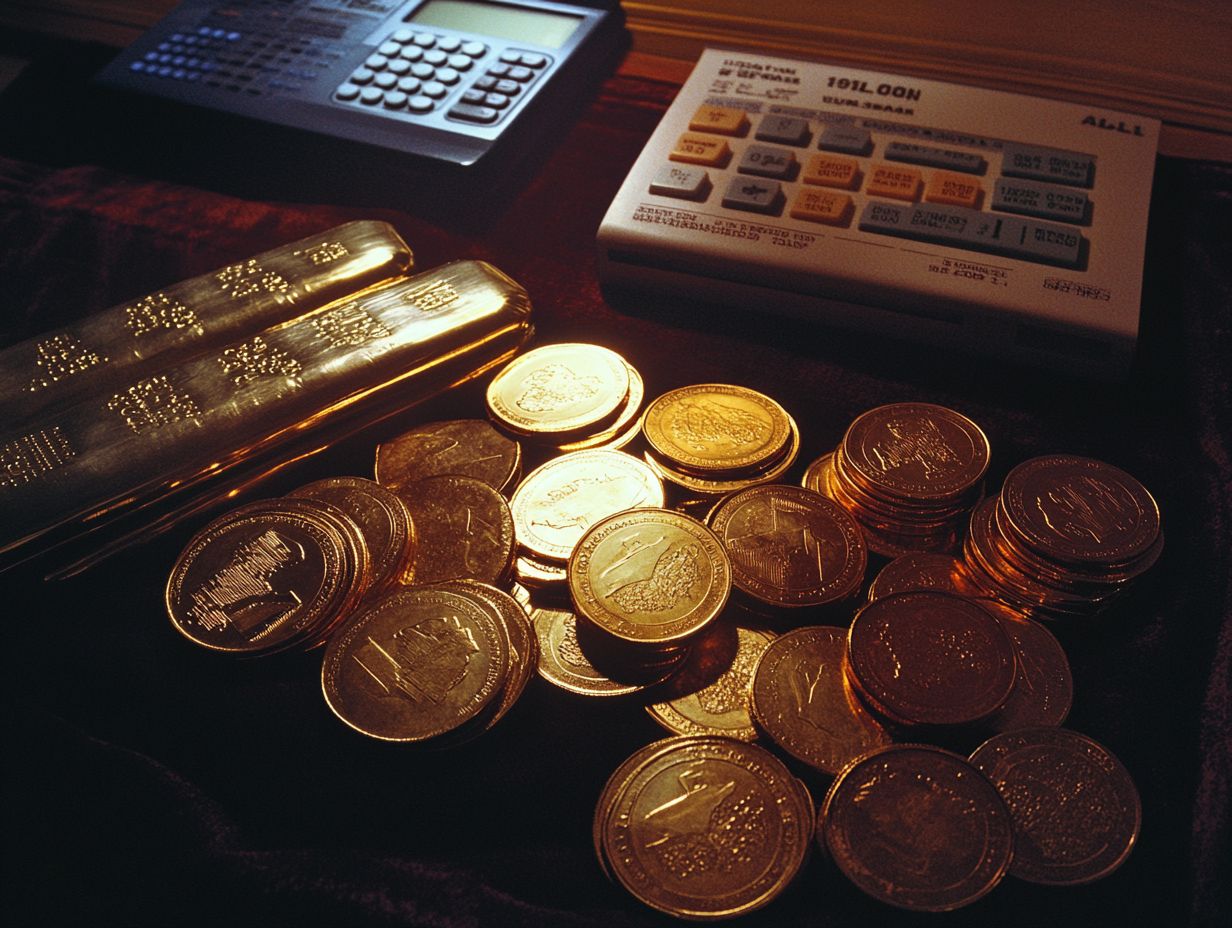
Investing in physical metals can elevate your investment portfolio and offer substantial tax advantages. Precious metals like gold and silver coins provide great opportunities for capital appreciation.
Understand the tax implications tied to these assets to maximize your financial benefits. By navigating the intricacies of the tax on profits made from selling assets, you can preserve more of your wealth.
If you purchase gold coins and hold onto them for over a year, you can enjoy favorable long-term capital gains tax rates. Certain exemptions and deductions may apply, particularly with a precious metals IRA, a special retirement account for investing in valuable metals.
Types of Physical Metals to Invest In
As an investor poised to enter the market for physical metals, you have options like gold, silver, platinum, and palladium. You can choose from various forms, such as government-issued coins and bullion bars.
Each metal presents distinct advantages and unique investment opportunities tailored to your strategies and financial aspirations.
Gold, Silver, Platinum, and Others
Gold, silver, platinum, and palladium captivate investors with their unique traits. Gold coins like the American Silver Eagle and Canadian Golden Maple Leaf are not only popular but also valuable assets.
You may find these metals appealing due to their intrinsic beauty, rich historical significance, and economic resilience. Gold has been a symbol of wealth for centuries and is often viewed as a safe haven during economic uncertainty. Additionally, considering the top 5 reasons to invest in silver now can also enhance your investment strategy.
Silver serves as both a precious metal and a key industrial component, making it versatile. Meanwhile, platinum and palladium play crucial roles in the automotive industry, impacting their market prices based on demand.
You can trade these metals in forms like bullion bars and coins, enhancing their liquidity. This quality adds to their allure, attracting both seasoned investors and newcomers eager to explore the world of precious metals. Understanding the benefits of dollar-cost averaging in silver can further enhance your investment strategy.
How to Invest in Physical Metals
Investing in physical metals offers a range of methods and platforms, giving you the power to make informed choices. Whether you use online platforms or delve into bullion sales, understanding the investment process is essential for your success.
Methods and Considerations
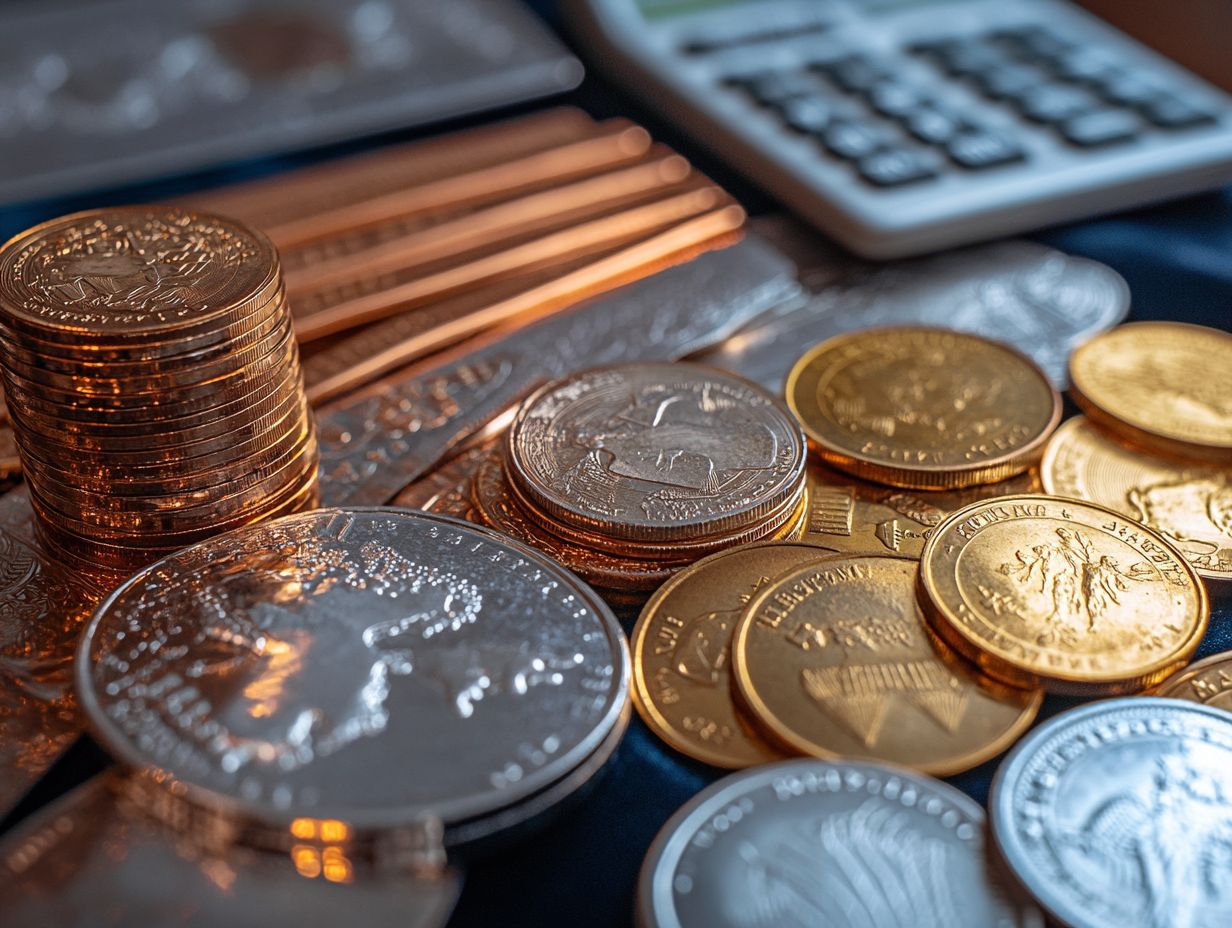
Your investment methods range from buying gold to investing in silver through various channels. Each choice needs careful consideration, especially concerning secure storage and market trading.
Weigh the merits of direct purchases from reputable dealers against the convenience of exchange-traded funds (ETFs) or the flexibility of futures contracts. Each option carries benefits and risks, including the risks and rewards of silver investing, making it crucial to evaluate your investment goals and risk tolerance.
Understanding how market fluctuations can impact prices helps strategize your future investments. With thorough research and analysis, you can secure your physical metal assets and prepare for the market’s unpredictable nature. Additionally, exploring the benefits of investing in silver can enhance your investment strategy.
Potential Risks and How to Mitigate Them
Investing in physical metals can be exciting, but it’s crucial to understand the potential risks involved. These range from market volatility to economic uncertainty. For you as an investor, it s vital to grasp these challenges fully and adopt strategies that effectively mitigate them.
Prioritizing secure storage solutions and being mindful of supply constraints are essential components of managing risk in this asset class.
Market Volatility and Storage Concerns
Market volatility can significantly affect the value of physical metals. This makes secure storage an essential consideration for you as an investor aiming to safeguard your assets amid economic crises and fluctuations in gold prices.
As economic conditions shift and prices become erratic, understanding these trends gives you the power to strategize effectively. Gold, often regarded as a safe-haven asset, typically sees price surges during uncertain times, encouraging many to reassess their portfolios.
It’s not just about the investment itself; how you store these assets plays a crucial role in your overall security and peace of mind. Access to reliable storage options helps mitigate risks from theft or damage.
Consider liquidity strategies. Selling smaller increments during volatile periods gives you quick access to cash while minimizing potential losses.
Frequently Asked Questions
What are the benefits of investing in physical metals?
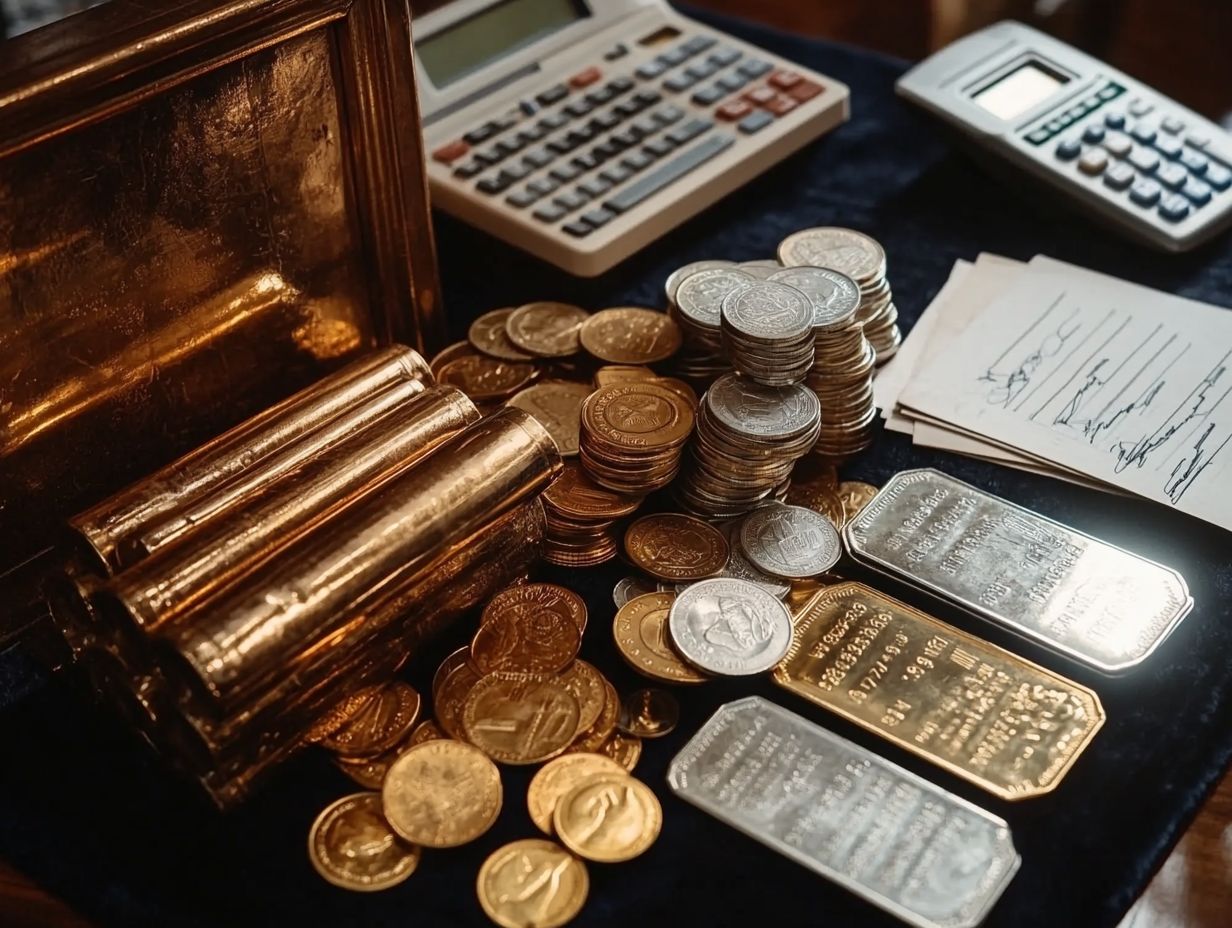
Investing in physical metals such as gold, silver, and platinum can provide a number of benefits, including portfolio diversification, protection against inflation, and a hedge against economic uncertainty.
What is portfolio diversification and how does investing in physical metals help achieve it?
Portfolio diversification means spreading your investments across different types to lower risk. Investing in physical metals can help achieve this by providing a non-correlated asset that can perform well in times of market volatility.
How does investing in physical metals protect against inflation?
Physical metals have historically been considered a hedge against inflation, as their value tends to increase during times of rising prices. This can help preserve your purchasing power and maintain the value of your investments.
What makes investing in physical metals a good hedge against economic uncertainty?
In times of economic uncertainty, investors often turn to physical metals as a safe haven for their wealth. This is because metals have intrinsic value and are not dependent on the performance of other assets or the economy as a whole.
Are there any tax benefits to investing in physical metals?
Yes, there are potential tax benefits to investing in physical metals, such as the ability to defer taxes on capital gains until the metal is sold. However, it is important to consult with a tax professional for advice specific to your situation.
What are the risks associated with investing in physical metals?
As with any investment, there are risks involved in investing in physical metals. These can include price volatility, storage and insurance costs, and potential for fraud or theft.
It is important to thoroughly research and understand these risks before making any investment decisions. Act now to secure your investments!










